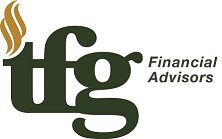
SECURE 2.0 Act Pros and Cons, Winners and Losers
Americans simply aren’t saving enough for retirement. Retirement plans are one of the top benefits you can offer to your employees. And thanks to incentives for employers in the SECURE 2.0 ACT there has never been a better time to start a retirement plan, creating a positive impact on employees and help make saving for retirement accessible.
Starting in 2025, a new provision in the law will require employers to automatically enroll eligible employees in new plans with a participation amount of at least 3%, but no more than 15%. The rate will increase by 1% point each year up to 15%. Employees are not forced to enroll, and still have the option to drop out of the plan or change the contribution rate.
This does not apply to companies with 10 or less employees, new companies in business for less than 3 years or church and government agencies. Existing plans won’t need to follow these new rules.
While small businesses are not required to enroll, the Act makes it easier and less expensive to set up a retirement plan. Plus there is a financial incentive for them to do so:
- There is a 100% tax credit of up to $5,000 for any administrative costs
- And up to a $1,000 per employee match for the employer’s contributions to any 401(k) plans.
- Employer may offer small financial incentives like low-dollar gift cards to help boost employee participation in a workplace retirement plan.
- A 401(k) plan, with a match, is both a recruiting and a retention tool for employees.
The legislation also expands 401(k) options significantly to include long-term part-time employees, beginning in December 2024. Part-time employees who work at least 500 hours per year in three consecutive years, are eligible to begin making elective deferrals to their employer’s 401(k) plan.
Who are the other biggest SECURE 2.0 winners besides employers?
- High-net-worth retirees, who benefit from the new RMD rules increasing the age for RMDs from age 72 to age 73 in 2023, and then to age 75 in 2033.
- Older working adults, who can put an extra $6,500 annually in their employer’s retirement plan once they reach age 50. SECURE 2.0 is increasing the limit to $10,000 starting in 2025 for savers ages 60 to 63.
- Student loan borrowers, who often have to choose between paying down debt or saving for retirement. Starting in 2024, student loan payments will be treated like retirement plan contributions. Therefore, employees who make student loan payments would qualify for matching contributions from their employer in a retirement account, even if they do not make contributions themselves.
- Parents with a 529 plan. If their child chooses to skip college, instead of having the funds go unused, parents can pass the account to another beneficiary, or withdraw funds resulting in income taxes and a 10% penalty on any earnings. When 2024 rolls around, parents will have another option. SECURE 2.0 allows for tax- and penalty-free rollovers (up to $35,000) to Roth IRAs from 529 college accounts that have been open for at least 15 years.
- Part-time workers, will benefit from a rule change that will require workers to have to work only between 500 and 999 hours in two consecutive years, instead of three, to become eligible for their company’s plan. Women make up the majority (64%) of part-time workers. So the fact that beginning in 2025 employers will have to make their 401(k) plans available to their long-term, part-time workers is a boon for women who work part-time in order to also care for young children.
- Women in general will benefit from increased options in the act that can align with and support the challenges females face in retirement such as fewer assets overall due to pay disparity, breaks in employment for childcare and eldercare, and a longer lifespan than male counterparts.
Who might be the losers?
The biggest criticism of the Act is that most provisions benefit higher-income folks. But SECURE 2.0 does provide some retirement help to low-income wage earners and part-time workers.
Starting in 2027, lower- and middle-income workers will receive what amounts to a federal matching contribution – up to $1,000 per person – that must be deposited into their IRA or retirement plan. Taking effect in 2024, companies can let workers set up an emergency savings account through automatic payroll deductions, with a cap of $2,500. Also, employees will be able to withdraw up to $1,000 from their retirement accounts for emergency expenses without having to pay the typical 10% early-withdrawal tax penalty.
CONTACT US: Benefits for small businesses include: 1) Taking advantage of the new tax credit by establishing a retirement plan, and 2) Creating an Automatic Enrollment provision to take advantage of additional tax credits. Through TFG Financial Advisors, we offer solutions that are easy to manage from administration to participation. We work with you to design a retirement plan that is right for you and your business, because when employees thrive, employers do too. To learn about your options, contact Cory Lyon, TFG Financial Advisor, at 561-209-1117, or clyon@tfgfa.com.
TFG Financial Advisors, LLC is a registered investment advisor. Information presented is for educational purposes only and does not intend to make an offer or solicitation for the sale or purchase of any securities, and past performance is not indicative of future results. Investments involve risk and are not guaranteed. Be sure to first consult with a qualified financial adviser and/or tax professional before implementing any strategy discussed here.
